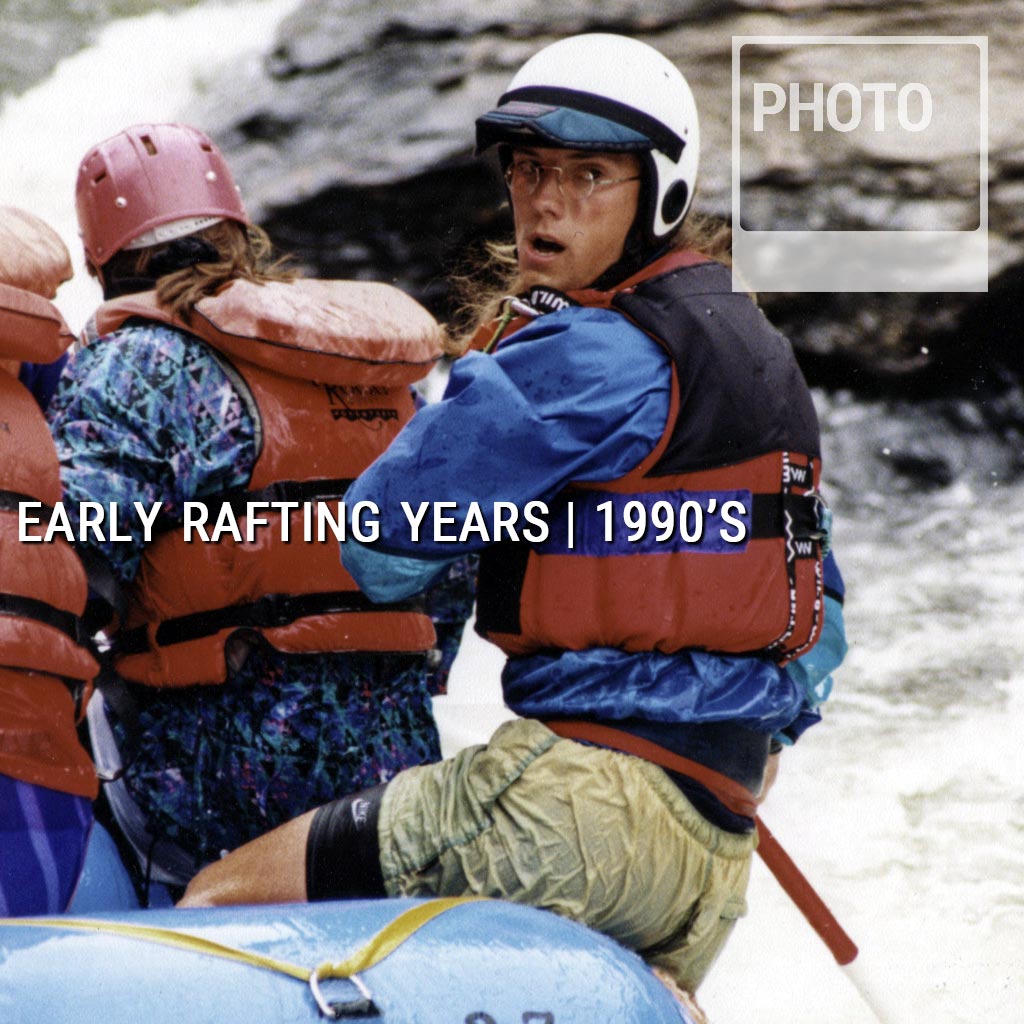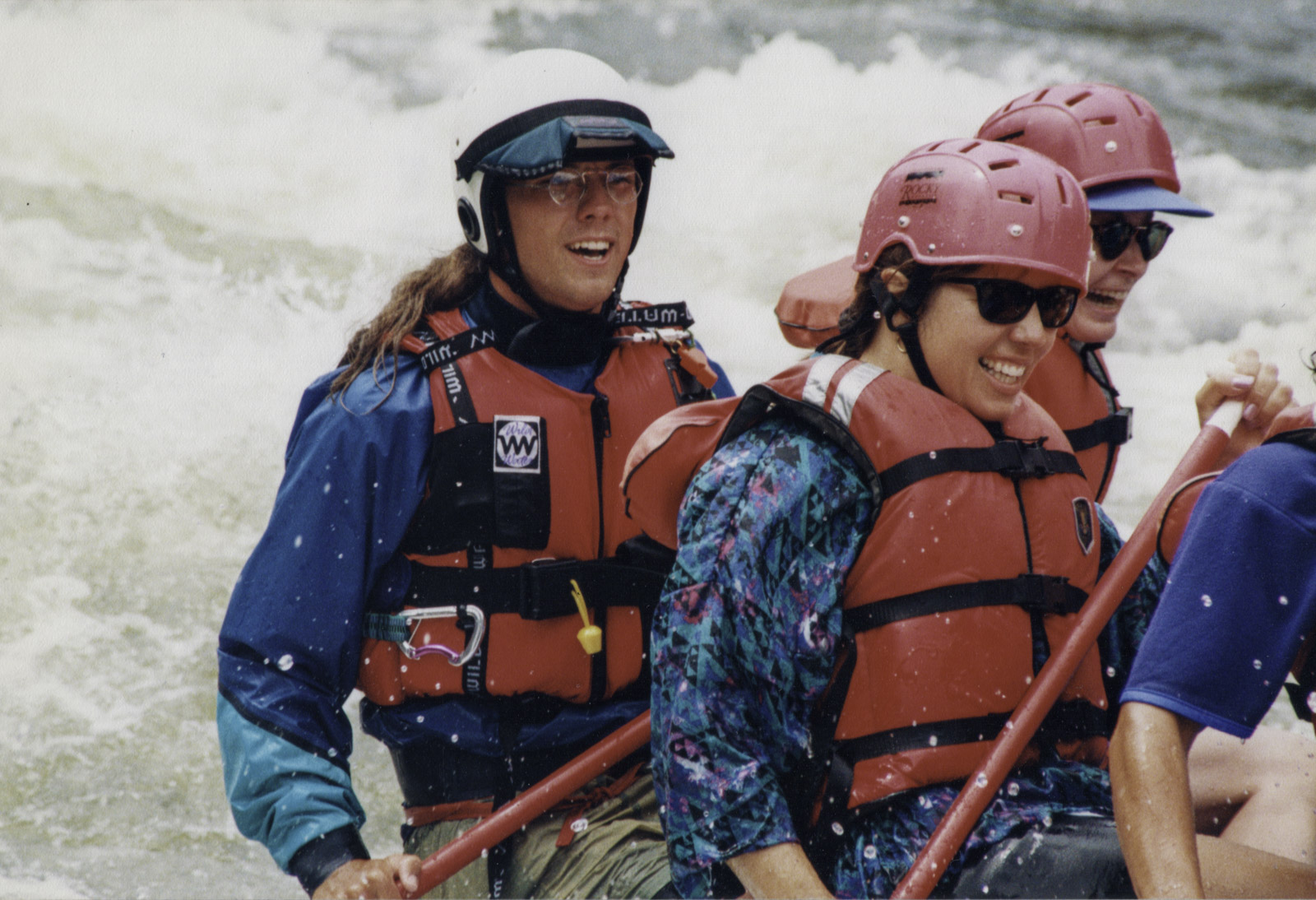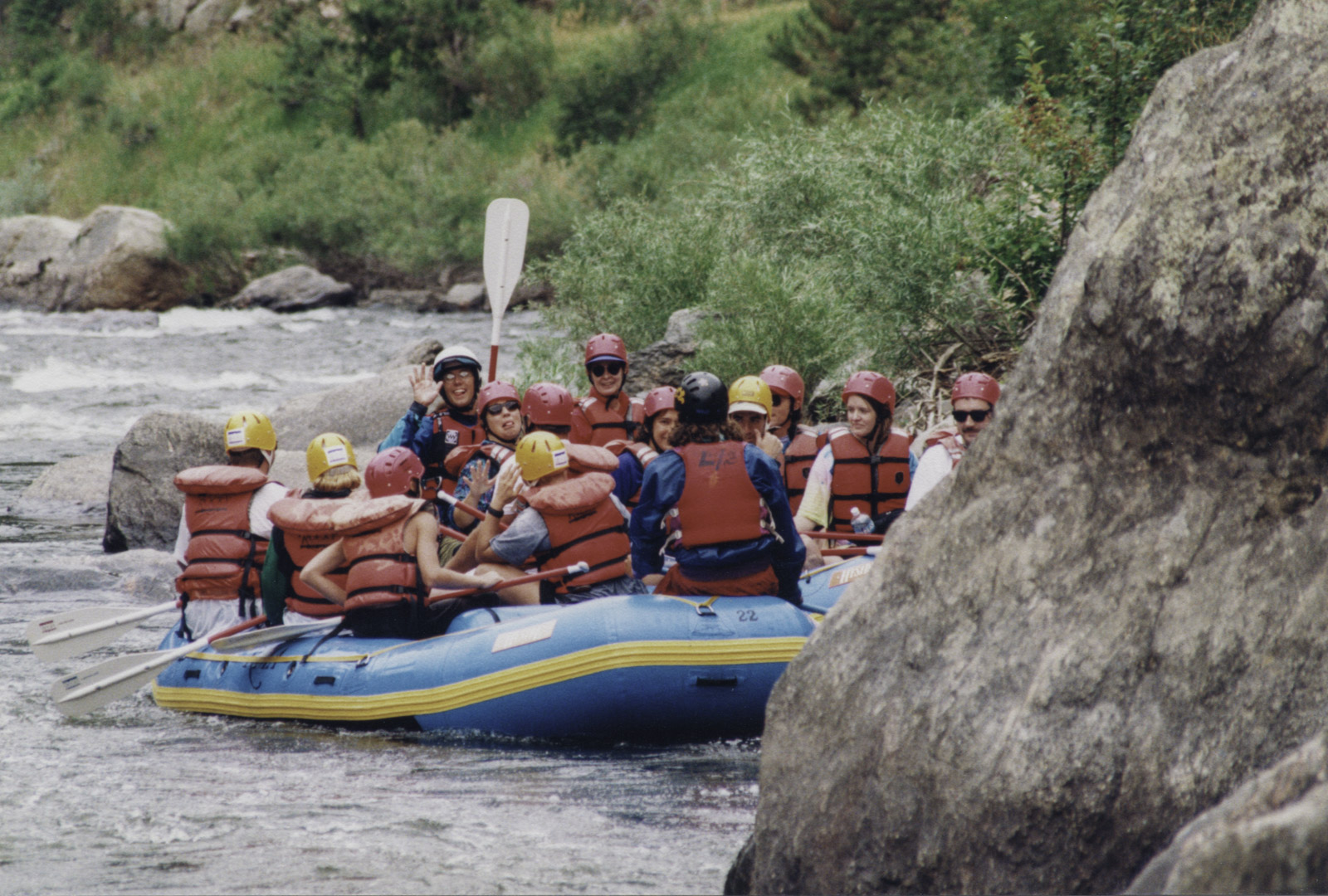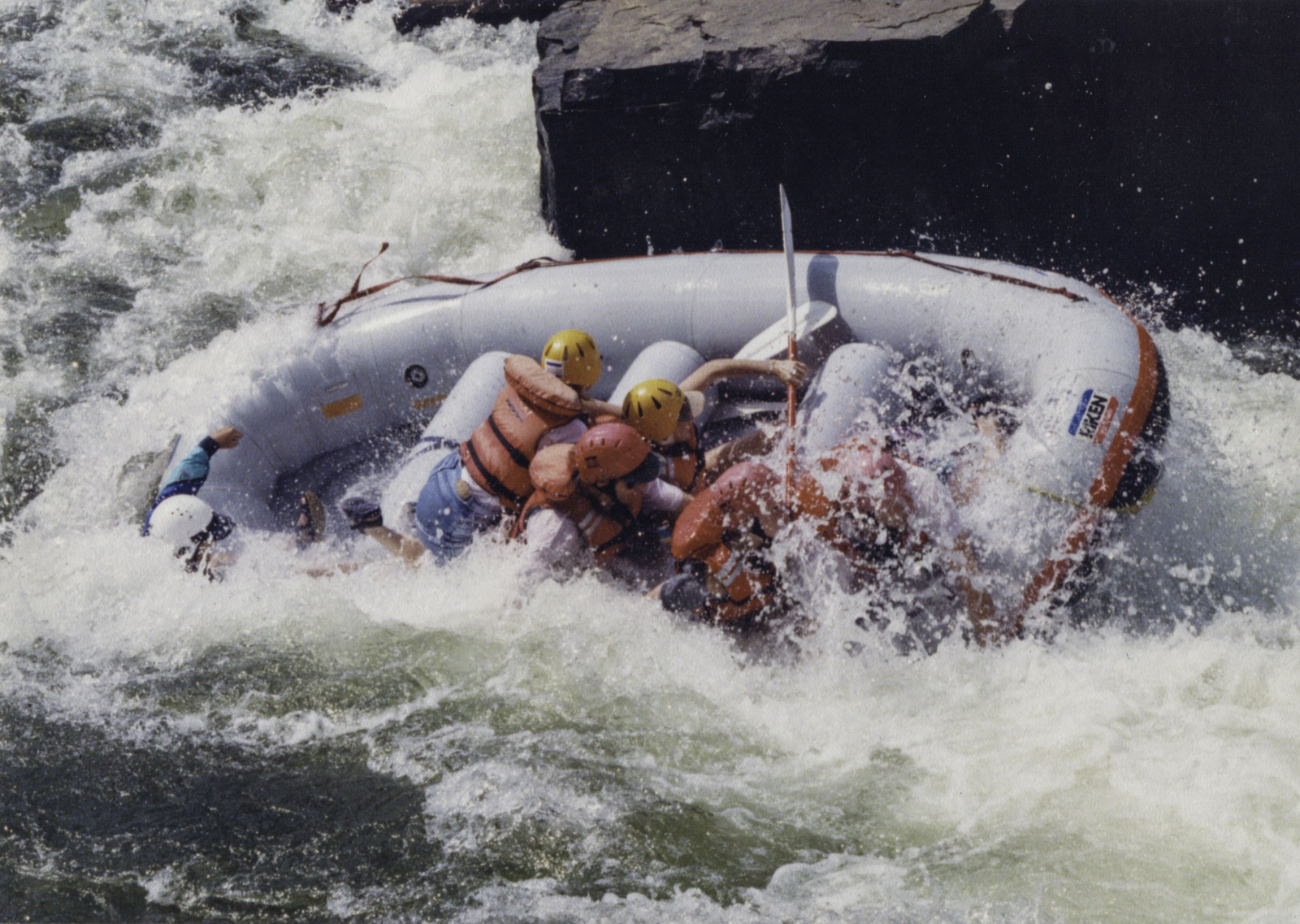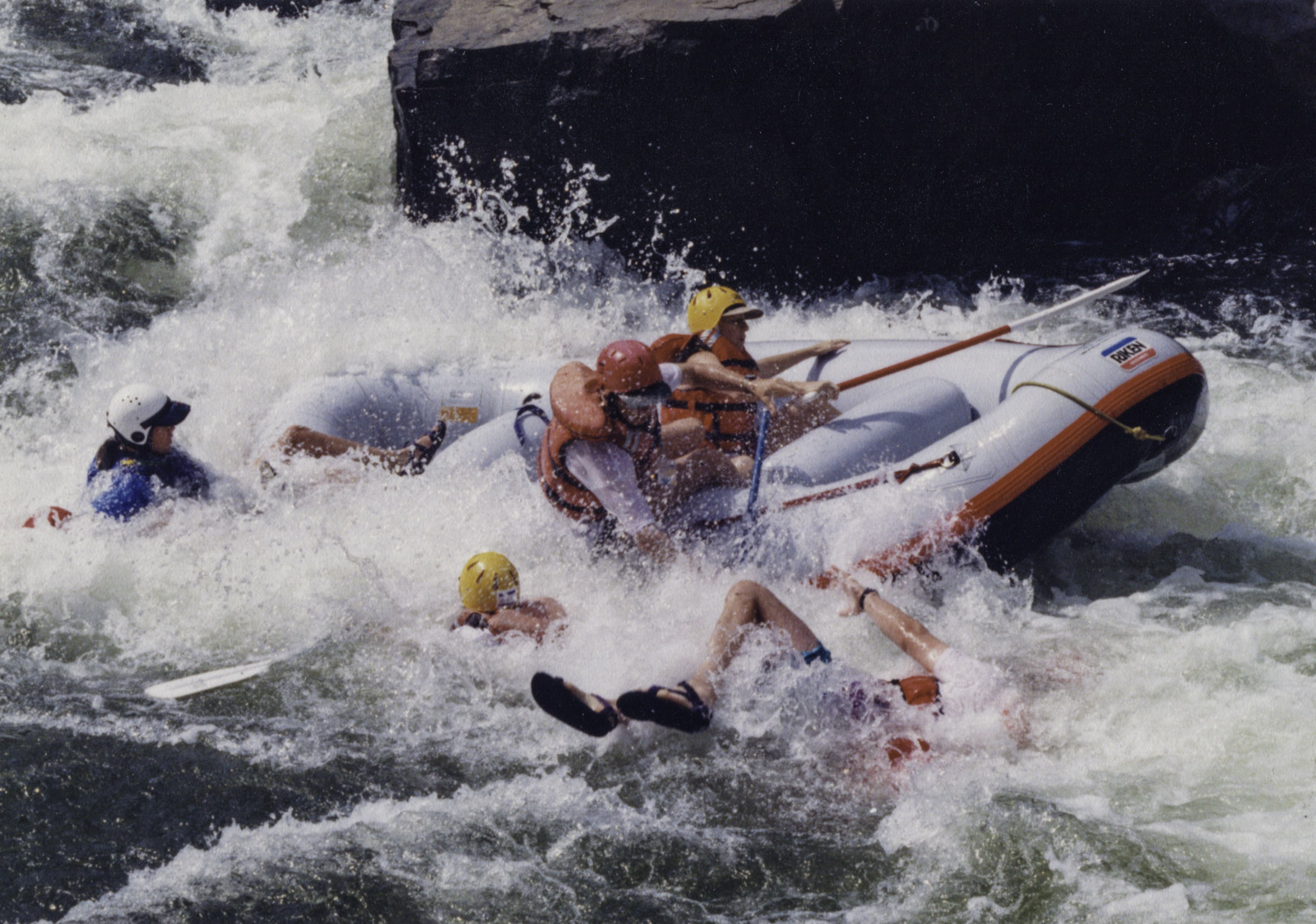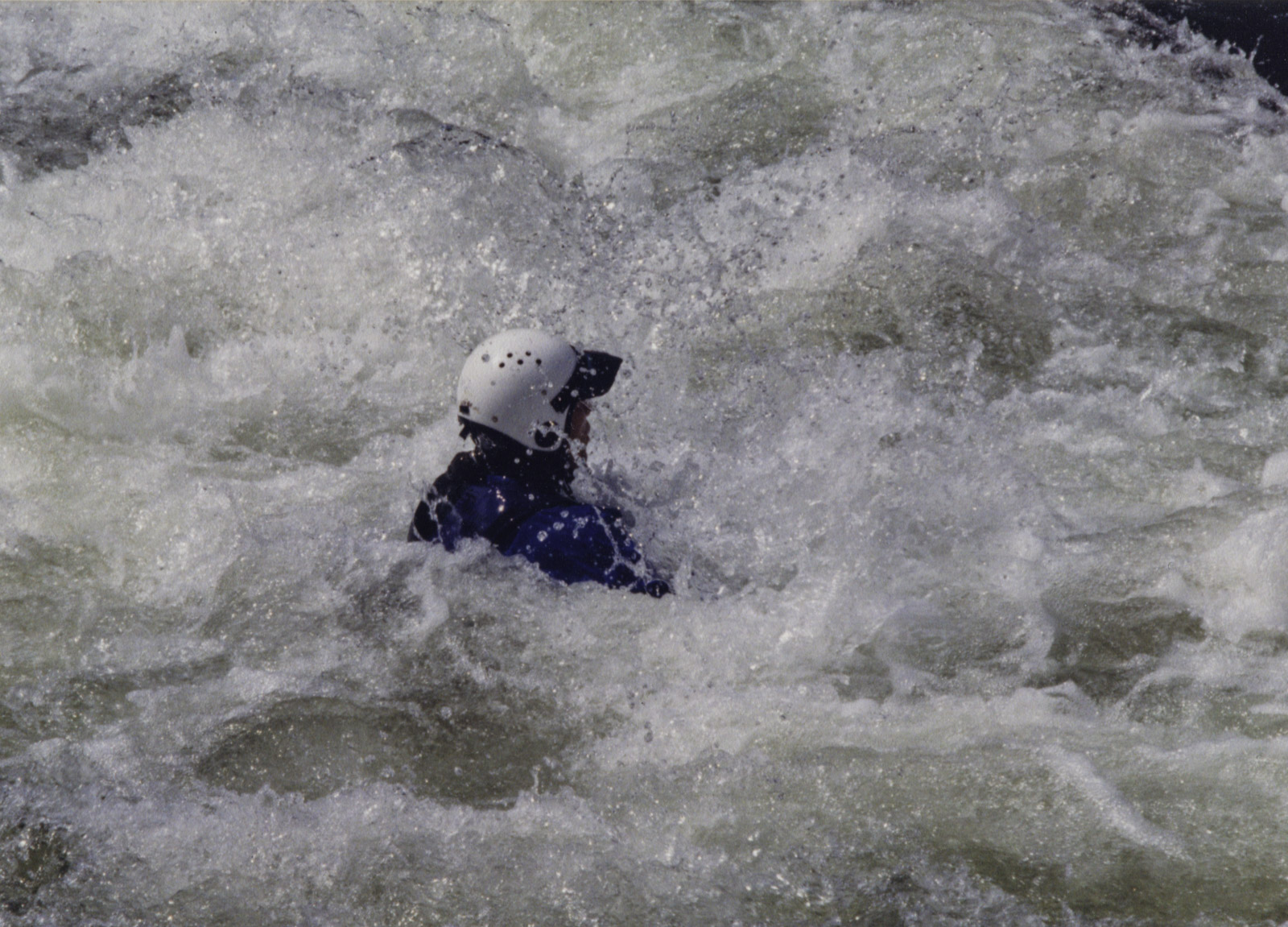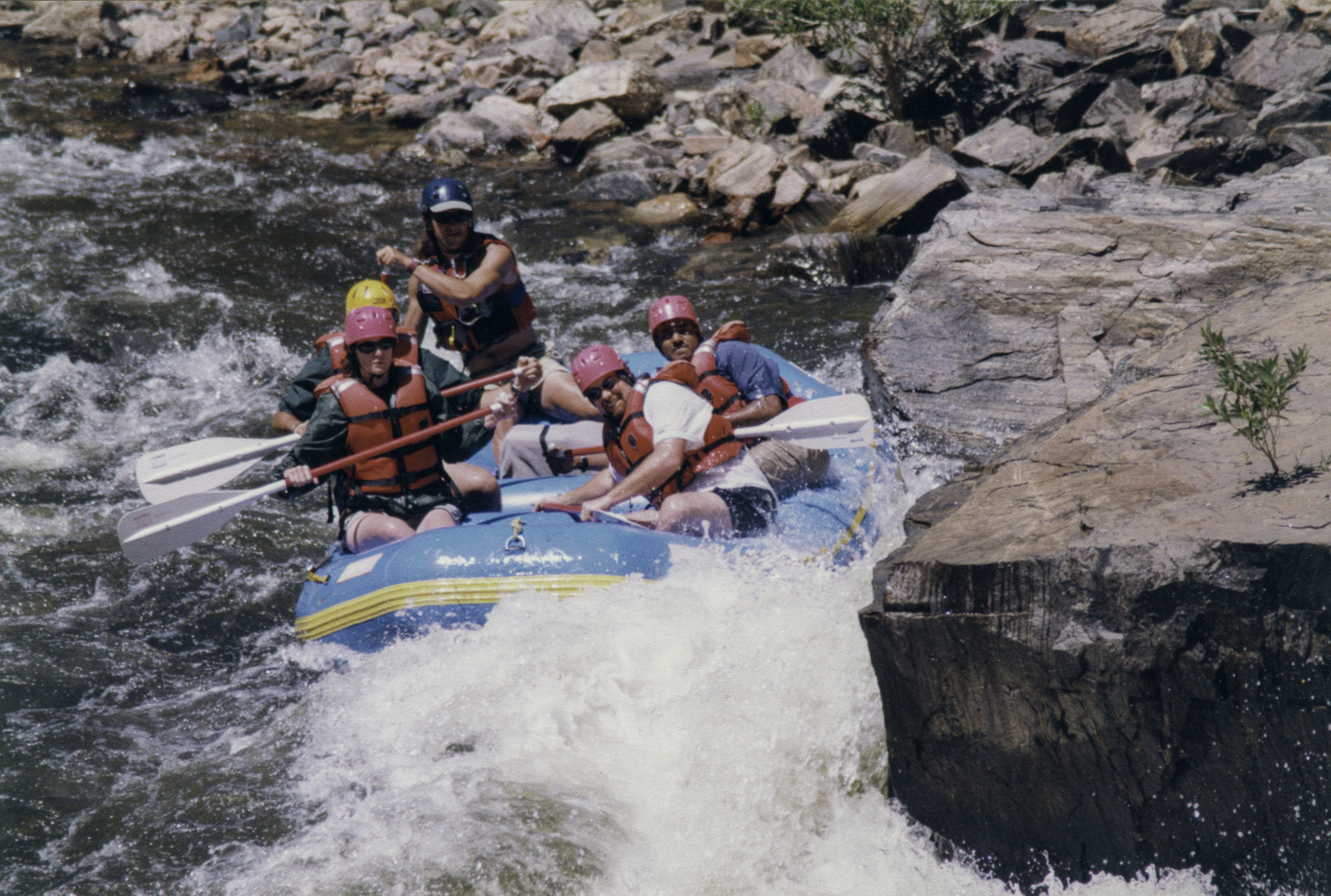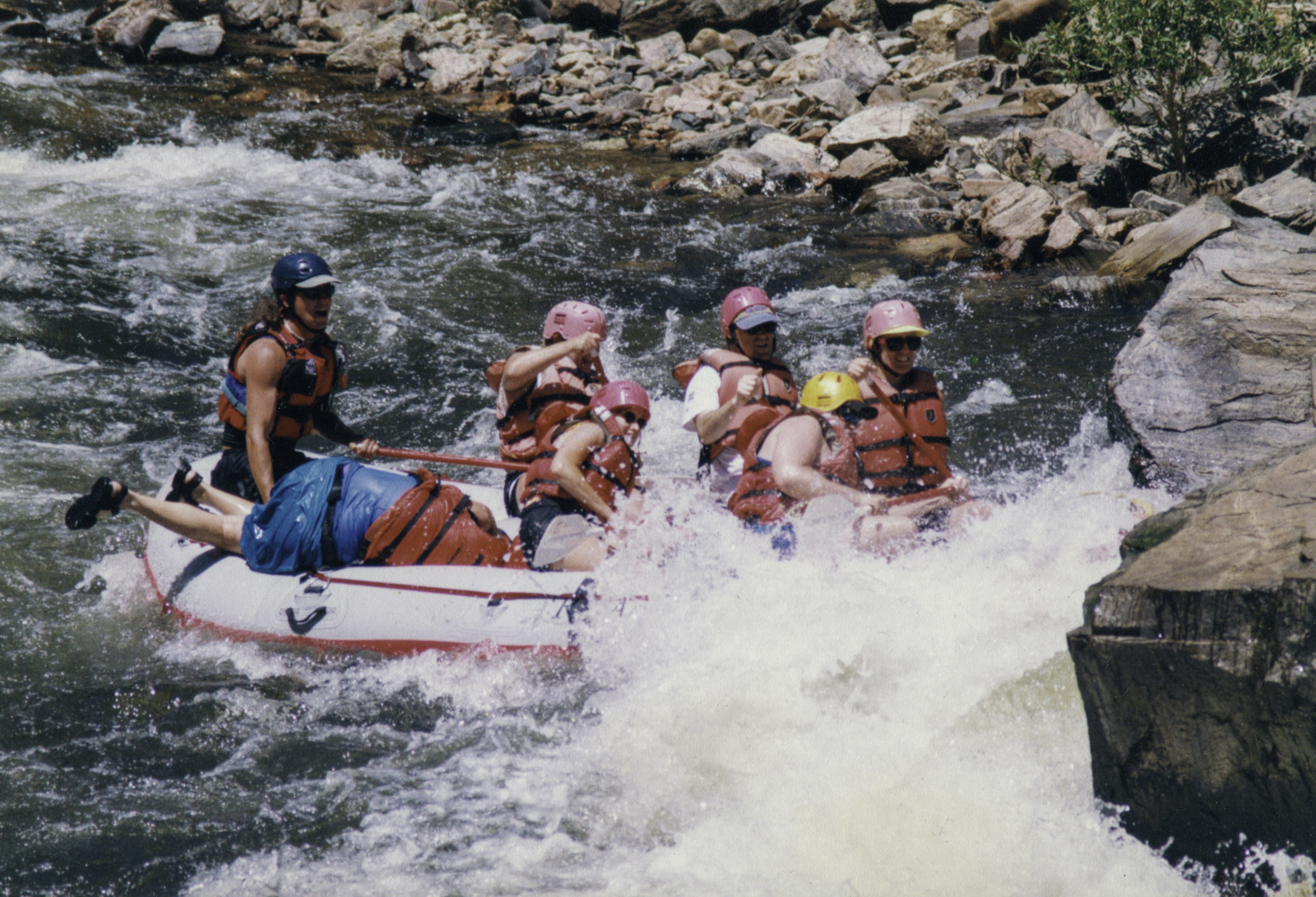Musings and photos from my inaugural years in the rafting mafia
I started guiding on rivers in 1995 on the Cache la Poudre just outside Fort Collins, CO, and have been a proud and filthy river rat ever since. The Poudre is a tight and technical river, and is still my favorite river in the USA. It's a gem that doesn't get as much attention as the Colorado River or the Arkansas in Colorado (don't put the word out...or else). To this date it is still Colorado's only federally designated Wild and Scenic river.
The Poudre's boating season starts in May and typically goes thru September. Because the river is fed from snow-melt runoff, it is cold AF in May and June. We'd often wear full wetsuits and other cold weather gear to fend off hypothermia.
The best time for running the river to get big-water thrills is mid-May thru June - the cold times come during high water times. The water moves fast and all of the big rocks are submerged and form all the rapids and holes. These all come with some consequences if they aren't navigated intelligently/luckily.
As the water drops, starting in mid/late July going thru September, the Poudre warms up and becomes more technical as rocks are revealed by the receding h20. There are numerous hidden obstacles that catch new guides by surprise. They quickly find out that it's far easier to run the river at high water.
Restoring the images
The slideshow above (aside from a musclebound and more youthful me) is comprised of photos taken from the road along side the Cache La Poudre river. These are all scans from 5x7 and 8x10 prints that I rediscovered in 2018.
Scanned Image
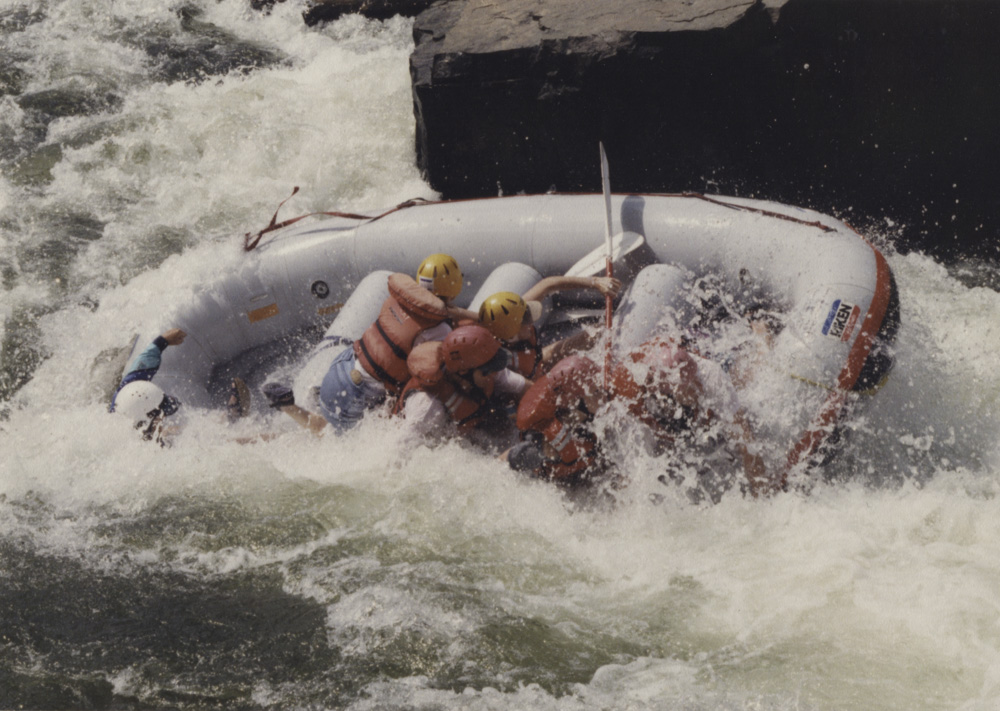
Restored Image
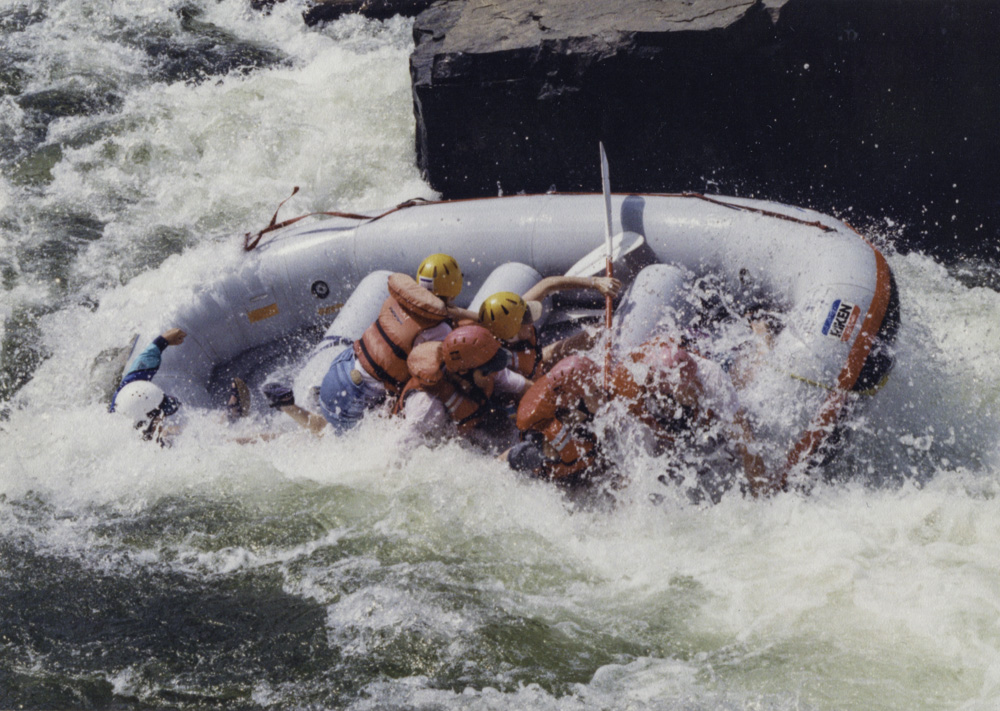
When I came across the trove of photos that are showing age, I decided to restore and transfer them into ones-and-zeroes before the hard copies revealed more age. I spent an afternoon scanning the photos at an excessively high resolution. To give some perspective, the above are rendered from 2400dpi (dots per inch) image scans, each of which is well over 14k - most high-end televsisions are 4k. So yeah, I definitely went overboard considering I was scanning small photo prints.
Working with the old prints presented challenges. The challenges were in color restoration and removing the patina, random dust, scratches, and abberations that tend to form on 20+ year-old prints stored by a negligent twenty year-old.
I spent a couple of hours working on the above 12 photod restoring them in Adobe Lightroom - the results were -objectively speaking- amazing and award-winning as you can see in the sample images.
